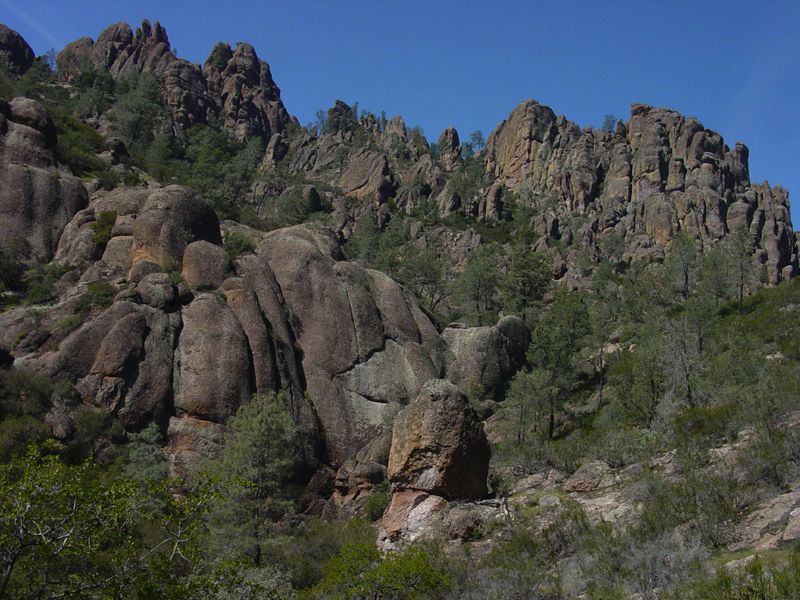
America's Newest National Park Declared

Pinnacles National Monument in California was signed into law as the United States' 59th and newest national park, now bearing the name Pinnacles National Park.
The new park, with its spectacular rock formations, beautiful spring wildflowers and group of endangered condors, is a popular tourist attraction, located in the Gabilan Mountains east of central California's Salinas Valley, according to a statement from the Department of the Interior. The park encompasses 27,000 acres of wild lands.
The stunning rock formations, called pinnacles and from which the park gets its name, are the remnants of half an ancient volcano, worn down by erosion over the eons. The matching half of the volcano lies 195 miles (314 kilometers) to the southeast, on the other side of the San Andreas Fault. (The 1976 discovery that the halves were connected showed the degree of offset along the fault.)
"This ancient and awe-inspiring volcanic field with its massive monoliths, spires, cave passages and canyons is a place that restores our souls and energizes our bodies with its beauty and abundant opportunities for outdoor recreation," Secretary of the Interior Ken Salazar said in the statement announcing President Obama's signing of the legislation making Pinnacles a national park. [Images: Pinnacles National Park]
More than 30 miles (48 kilometers) of trails lead to the park's various geological formations, which are popular with climbers.
Pinnacles is also one of three release sites in the country for the endangered California condor and the only one in a national park, the Interior statement notes. Thirty-one free-flying condors live within the park, and all chicks born and condors released there are monitored by park biologists and volunteers. The biologists check blood and feather samples for signs of lead poisoning, one of the key threats to the critically endangered bird.
The park was first designated as a national monument by President Theodore Roosevelt in 1908. The Pinnacles National Park Act calls out the importance of the various ecosystems found in the park, the unique geological setting, and the historical and cultural significance it has to Native American groups and early American explorers and settlers, the Interior statement said.
Sign up for the Live Science daily newsletter now
Get the world’s most fascinating discoveries delivered straight to your inbox.
This story was provided by OurAmazingPlanet, a sister site to LiveScience. Reach Andrea Thompson at athompson@techmedianetwork.com and follow her on twitter @AndreaTOAP. Follow OurAmazingPlanet on Twitter @OAPlanet. We're also on Facebook and Google+.

Andrea Thompson is an associate editor at Scientific American, where she covers sustainability, energy and the environment. Prior to that, she was a senior writer covering climate science at Climate Central and a reporter and editor at Live Science, where she primarily covered Earth science and the environment. She holds a graduate degree in science health and environmental reporting from New York University, as well as a bachelor of science and and masters of science in atmospheric chemistry from the Georgia Institute of Technology.










